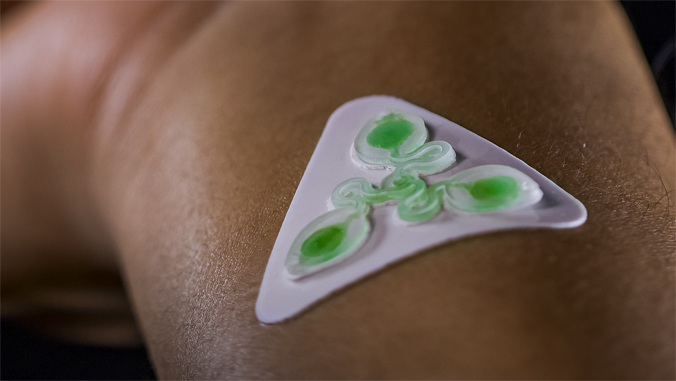3D-printed wearable sweat sensor
Researchers at the University of Hawaiʻi at Mānoa College of Engineering have taken a leap forward in sweat analysis with a 3D-printed wearable sweat sensor called the ‘sweatainer.’
Sweat is not just an indication of a productive exercise session, but it also contains crucial details about our well-being, revealing evidence of dehydration, exhaustion, blood glucose levels, and even severe illnesses like cystic fibrosis, diabetes, and heart malfunction.
By utilising 3D-printing, the scientists have created a form of wearable sweat detector that enhances the functionality of wearable sweat gadgets.
The sweatainer is a compact wearable gadget, akin to a child's sticker, that can gather and examine sweat. With multiple sensors integrated, the sweatainer can scrutinise sweat in a manner similar to previous sweat-sensing wearables.
“3D-printing enables an entirely new design mode for wearable sweat sensors by allowing us to create fluidic networks and features with unprecedented complexity,” Department of Mechanical Engineering Assistant Professor Tyler Ray said. “With the sweatainer, we are utilising 3D-printing to showcase the vast opportunities this approach enables for accessible, innovative and cost-effective prototyping of advanced wearable sweat devices.”
 Credit: University of Hawaiʻi at Mānoa College of Engineering
Credit: University of Hawaiʻi at Mānoa College of Engineering
To collect sweat, conventional methods involve using absorbent pads or microbore tubes that are tightly pressed against the surface layer of the skin with bands or straps. However, these methods necessitate skilled personnel, specialised handling, and expensive laboratory equipment. Although the introduction of wearable sweat sensors has tackled certain issues, these gadgets are still restricted to one-time usage. Once the device is full, it needs to be detached, and the sweat collection process cannot continue.
The sweatainer features a ‘multi-draw’ technique for collecting sweat, enabling the extraction of several distinct samples for analysis either on the device itself or at a laboratory. Taking inspiration from the vacutainer commonly employed in clinical blood sampling, this innovation not only enhances the efficiency of sweat collection but also expands the potential for conducting at-home testing, preserving samples for future research, and integrating with current health monitoring techniques.
The researchers aim to foster innovation and enable wider access, convenience, and insights in personal health monitoring by following the blueprint laid out in the sweatainer.


